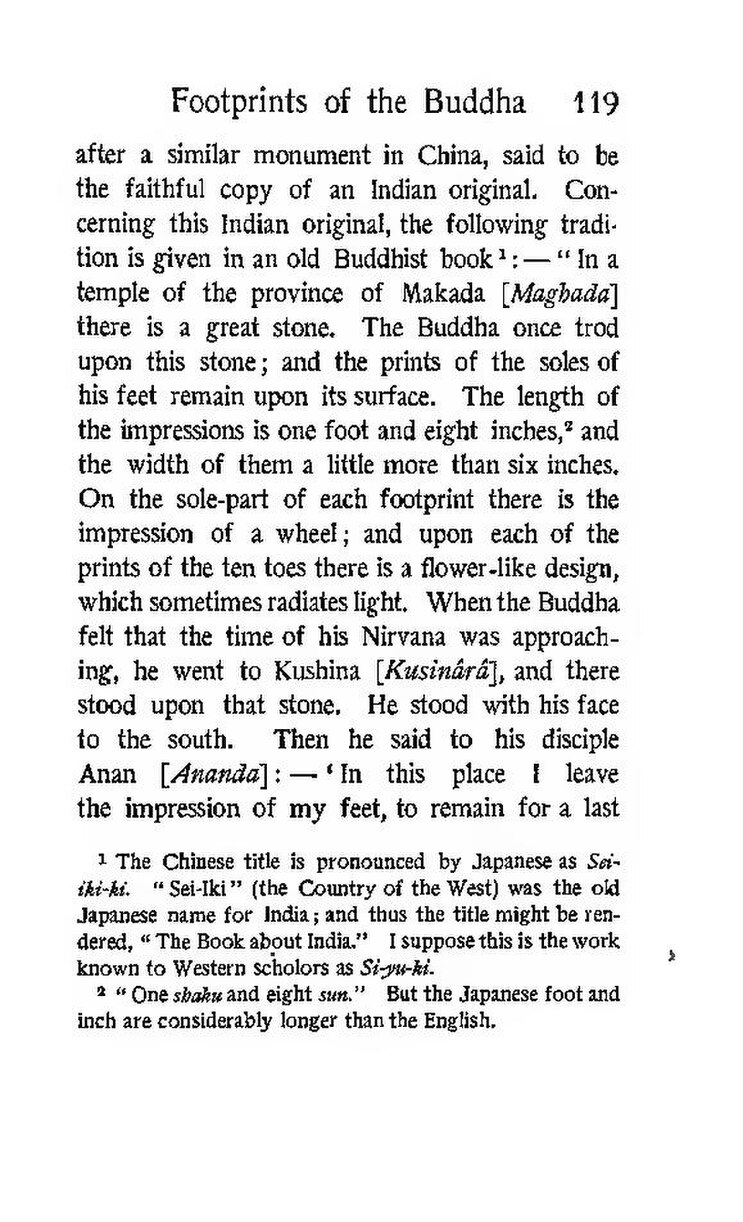after a similar monument in China, said to be the faithful copy of an Indian original. Concerning this Indian original, the following tradition is given in an old Buddhist book[1]:—“In a temple of the province of Makada [Maghada] there is a great stone. The Buddha once trod upon this stone; and the prints of the soles of his feet remain upon its surface. The length of the impressions is one foot and eight inches,[2] and the width of them a little more than six inches. On the sole-part of each footprint there is the impression of a wheel; and upon each of the prints of the ten toes there is a flower-like design, which sometimes radiates light. When the Buddha felt that the time of his Nirvana was approaching, he went to Kushina [Kusinârâ], and there stood upon that stone. He stood with his face to the south. Then he said to his disciple Anan [Ananda]:—‘In this place I leave the impression of my feet, to remain for a last
- ↑ The Chinese title is pronounced by Japanese as Sei-iki-ki. “Sei-Iki” (the Country of the West) was the old Japanese name for India; and thus the title might be rendered, “The Book about India.” I suppose this is the work known to Western scholors as Si-yu-ki.
- ↑ “One shaku and eight sun.” But the Japanese foot and inch are considerably longer than the English.
